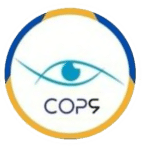Orthoptic rehabilitation is a type of eye re-education that aims, through exercises, to relieve or even improve the patient’s vision. Carried out by an orthoptist during personalized sessions, daily life is thus improved! Take advantage of this article to learn all about this rehabilitation of the ocular function.

What is orthoptic rehabilitation?
Your general practitioner and your ophthalmologist can prescribe orthoptic rehabilitation sessions. This treatment is performed by the orthoptist. You may then make an appointment at a center like COP9.
Everyone, of all ages and profiles, can attend these sessions: whether you suffer from amblyopia, astigmatism, hyperopia, myopia, AMD (age-related macular degeneration), oculomotor paralysis and ocular muscle problems, etc.
The specialist will detect, during an eye examination, the symptoms of an ocular dysfunction and treat it. During the orthoptic rehabilitation, the orthoptist diagnoses and carries out a medical treatment based on exercises during the sessions. He or she may prescribe exercises to be done at home in order for the patient to progress rapidly in their rehabilitation.
Why undergo orthoptic rehabilitation?
Patients who come to COP9 to see an orthoptic professional have a variety of visual function disorders. The goal of the sessions is to rehabilitate, or re-educate the deficient oculomotor function.
The symptoms that should alert you are:
- Stinging, burning or crying eyes
- A feeling of tightness around the eyes
- Decrease in visual acuity
Les adultes dans la vie active qui travaillent sur les écrans (ordinateurs, tablettes ou téléphones) sont souvent atteints de troubles de la vue ainsi que des céphalées en fin d’après-midi, voire dans la journée. Le télétravail peut exacerber ces pathologies ophtalmologiques, pensez à lire nos conseils dans cet article ! Les personnes diabétiques ou porteuses d’un handicap (déficience visuelle, cognitive, etc.) peuvent aussi réaliser une rééducation orthoptique.
Adults in the working world who work on screens (computers, tablets or phones) often suffer from vision problems as well as headaches in the late afternoon or even during the day. Remote working can worsen these ophthalmologic pathologies, consider reading our advice in this article! People with diabetes or disabilities (visual or cognitive impairment, etc.) can also undergo orthoptic rehabilitation.
Children may have the same issues. They may also experience difficulty in reading for long periods of time, letters or lines getting mixed up, a blurred field of vision, etc. Orthoptic rehabilitation is also an excellent way to anticipate the aging process and to perform functional explorations.
Thanks to a screening with adapted examinations, and to an orthoptic rehabilitation, the specialist ensures the care and the treatment of these symptoms.
What happens during orthoptic rehabilitation?
Carried out in a hospital as well as in a vision control center, the patient meets with his or her orthoptist during a specific number of sessions, with regular appointments.
Before beginning visual rehabilitation, the vision professional listens and discusses with their patient suffering from an eye pathology. Their specific needs, complaints and disabilities are noted: orthoptic rehabilitation and access to care are specifically targeted and effective.
The treatment of patients with vision disorders has an identical rehabilitation base. But each orthoptist brings his or her own experience and skills to each different situation. The instruments used vary according to the needs and preferences of the practitioners during treatment.
During the first consultation, the practitioner will perform an orthoptic check-up. Eye exams and complementary tests are then performed.
The diagnosis is based on these eye examinations:
- The motor axis.
- The sensory axis.
- Recognition of forms.
- Recognition of lines.
These explorations allow the patient to have efficient medical care: the orthoptist will diagnose any anomaly such as visual impairment, presbyopia, strabismus, ocular diseases, etc.
A center adapted and equipped for orthoptic rehabilitation
COP9 works in partnership with orthoptists to offer you a complete visual function check-up. We also think of our young patients with visual disorders during pediatric appointments!
Our center is equipped to offer a dynamic, varied rehabilitation that keeps the patient interested:
- Balls of different sizes.
- Characters.
- Drawings.
- Prism bars or isolated prisms.
- Software developed for visual rehabilitation.
The orthoptist also works with instruments, such as the synoptophore, to work and reeducate binocular vision. This device has been present in orthoptic practices for many years. We will talk about the orthoptist’s instruments in a future article!
To conclude our article on orthoptic rehabilitation at COP9, it is worth knowing that our medical team performs a variety of sessions and provides in-depth care for ocular conditions. The rehabilitation is adapted to the age, understanding, disability and pathology of the patient treated during the specialized consultation!
